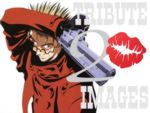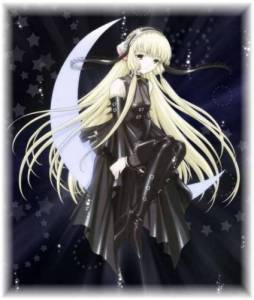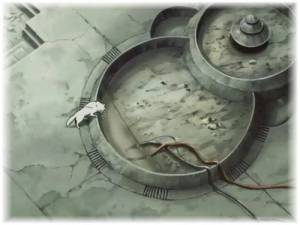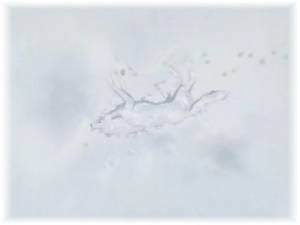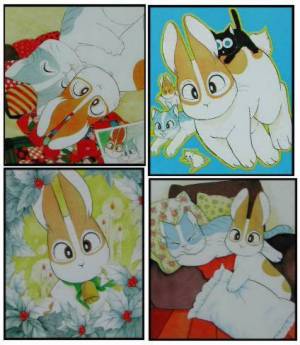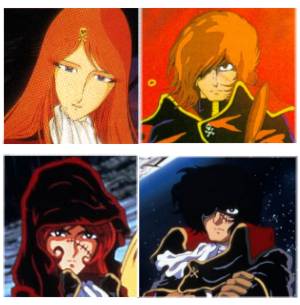|
Fantasy
Bytes 1.1 |
HUMOR OR SO |
|
|
Header
pic: Vash 'the Stampede' from Trigun © Yasuhiro Nightow
|
If this is not what you xpected, click here |
|
Chobits © 2000-2002 CLAMP This is the only entry that comes out of some personal detachment: I don't like this anime. Nonetheless it requires certified blind eyes to miss the beauty of Chobits. A mere one entry in CLAMP's long list of best-selling stuff since the nineties that include X, CardCaptor Sakura, RG Veda, Mahou Kishi RayEarth, Tokyo Babylon, and so forth, Chobits still stands out on its own. CLAMP itself has often been mistaken as a boy or girl band by bewildered parents over 40 upon receiving bills; it is that popular, perhaps unprecedented in the world of manga and anime. Almost always selling the stuff under the collective banner, this CLAMP that consists of Nanase Ohkawa, Mokona Apapa, Mick Nekoi and Satsuki Igarashi -- all are on their early 30's by now -- has had Chobits made into neverending strings of cute utilitarian trinkets and cool useless things. The appeal is understandable, although (or because) the female entity you see hanging out on the crescent above these lines is a computer, not a 'real girl', or so the storyline says. Keep the typical story aside, kick the sexual subtext out, forget that CLAMP is now perhaps a pack of billionaires, and what's left is just the essentially breathtaking outcome of some inimitable skill in manga-drawing. It is art, man, even if you never care a fig.
|
||
 |
||
|
Silent scenes involving Kiba in Wolf's Rain I have said that this anime is poetic. Here are a few kilobytes of evidence. Wolf's Rain: Released in January 2003 by Bones and Bandai Visual studios, Japan. Story by Nobumoto Keiko, character designer Kawamoto Toshihiro, mecha designer Aramaki Shinji, art directors Morikawa Atsushi & Mizuta Nobuko, music by Kanno Yoko, sound engineer Wakabayashi Kazuhiro, director Okamura Tensai.
|
||
|
Sentaro from Piku Piku Sentaro Drawing and telling stories about a rabbit is one of the most hazardous and difficult jobs in the world. More than that, the rabbit is a normal rabbit, doesn't bothersomely mimic primates as Disney's Roger and Warner's Bugs; just a very tiny ordinary pet rabbit. He doesn't even speak Japanese. Tsubasa Nunoura has done the job of his own choice very well. Sentaro and his life in the human-infested world is, to me, a masterpiece.
Piku Piku Sentaro © Tsubasa Nunoura/Kodansha
|
||
|
Captain
Harlock and
Emeraldas
from Harlock Saga By now there is a relatively new spin out of Matsumoto Leiji's wonderfully grotesque manga series that first saw print in 1978. The original Matsumotonian characters look like those on the upper part of the picture above: [see that?]. The underpart is how the same characters look like today. Emeraldas has undergone a massive visual surgery, from being a cute but kind of ordinary anybody (just make her wear something other than the pirate 'uniform' and she'd be another anime's leading lady), to sinister but unmistakably shady piratess that holds her face as an effective calling card, as she is given a Harlockian scar. The original Harlock didn't look suicidal although Matsumoto gave him that trait; the new un-suicidal Harlock, on the other hand, does. While the old Harlock was encapsuled within a broody, despondent, foreboding apathy, the new one flashes indignation and hints of unleashed wrath. Notice the pastelizing and darkening at once of the colors -- Emeraldas' hair from utter vermilion into terracotta crimson, Harlock's from loud carrot into somewhere between deep scarlet to ultramarine black, depending on the available lighting. Digital technology that keeps sophisticating itself has enabled animators to soften the tones and reach for depth and better the contrast. But the basic lines that make Matsumoto's characters unique in the manga and anime world stay quite faithfully on in the younger productions, the most pronounced overall change is that the rest of the cast, excepting those two, are sort of transparent. To me, the new saga presents a triumphant overhaul -- the anime is even better than the predecessor. Harlock and Emeraldas are certainly not everybody's cup of tea, but they happen to push the right button in my mind that I gladly let them linger.
Harlock Saga © 1999-2000 Leiji Matsumoto/ Shinchousha/Bandai Visual/81 Produce |
||
|
RainForestWind/AmeMoriKaze
Personal Homepages & Other Wastelands
© 1996, 1997, 1998, 1999, 2000, 2001, 2002, 2003, 2004, 2005 NIN
|
